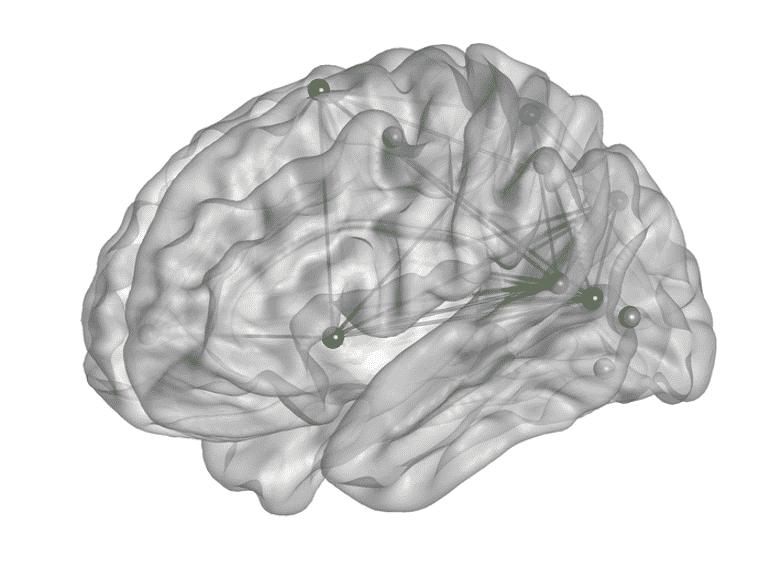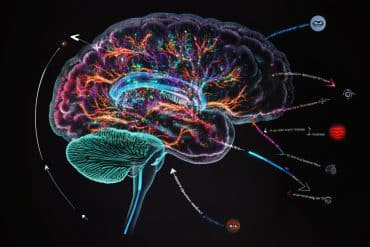Summary: People who experienced sexual abuse or suffer from PTSD have reduced connectivity in the ventral and dorsal attention network (VAN-DAN network) compared to those with no history of abuse or PTSD.
Source: Medical University of South Carolina
A study conducted at the Medical University of South Carolina (MUSC) in adults with a history of childhood maltreatment showed that two groups – those with a history of sexual abuse and those with posttraumatic stress disorder (PTSD) – had reduced brain connectivity in the attention systems known as the ventral and dorsal attention network (VAN-DAN).
No such reduction was seen in adults with a history of physical abuse, nor in those who did not develop PTSD. The team, which was led by MUSC neuroscientist Jane Joseph, Ph.D., also showed that connectivity in the VAN-DAN systems increased after treatment with oxytocin, a hormone associated with social affiliations and the stress response.
The team’s findings are published in Psychiatry Research: Neuroimaging.
“We believe that these findings contribute to the field by helping us to understand better how the connection between the brain’s attention systems may be involved in whether PTSD develops after childhood trauma,” explained Kathleen Crum, Ph.D., lead author of the article. Crum, who was at MUSC at the time of the study, has since transitioned to a faculty position in the Department of Psychiatry at the Indiana University School of Medicine.
Abuse during childhood is a major risk factor for PTSD. Indeed, children who experience any form of abuse are 70% more likely to develop PTSD. Sexual abuse during childhood disrupts brain development and is theorized to be associated with betrayal trauma, which occurs when a person’s trust in an institution or loved one is violated by abuse.
“Current psychology literature suggests the possibility of something known as betrayal trauma,” Crum explained. “People perceive events differently depending on the form of abuse.”
For example, study participants with a history of sexual abuse had reduced VAN-DAN connectivity, regardless of whether they went on to develop PTSD, whereas those with a history of physical abuse did not.
VAN and DAN each play a unique role in the regulation of attention, according to Crum.
“DAN is a network in the brain that is responsible for voluntary attention, while VAN is the process of shifting or reorienting our attention to another event,” said Crum. “They act as a push-pull mechanism; while one action occurs, the other cannot.”
Joseph and Crum wanted to study the VAN-DAN network because patients with PTSD often find it difficult to reorient their attention.
“Individuals with PTSD have difficulty disengaging attention from threat-related cues, including cues that remind them of their traumatic experiences,” explained Crum. “Individuals with PTSD may also tend to interpret neutral cues as threat-related. Collectively, these problems affect their ability to direct their attention to the task at hand in their everyday lives.”
It is thought that the “fight or flight” response may be hyperactive in these individuals, which may account for this difficulty with shifting their attention. Crum provided an example to illustrate why it can be difficult for people with PTSD to concentrate on a specific task when their perception of external threat is heightened.
“Imagine a scenario where you are parachuting or skydiving and someone asks you to do a complex math problem – how well would you do on that math problem?” asked Crum. “The focus on survival and staying out of danger can compete with performing everyday tasks, like holding a conversation or doing our work.”

The team wanted to measure VAN-DAN connectivity at rest because it enabled them to compare differences in connectivity without the demands of a specific task.
To measure resting-state connectivity, the team placed participants in an MRI scanner and asked them to focus on a cross on a screen, allowing their attention systems to remain at rest. Participants with PTSD or a history of sexual abuse showed decreased resting-state functional connectivity between the VAN and DAN regions, suggesting decreased connectivity between the two.
The effect of the hormone oxytocin was also explored in relation to decreased connectivity. Oxytocin is thought to act on the attention network system and is being studied nationally as a potential treatment for PTSD and childhood trauma, including at MUSC.
“Oxytocin is very important for social bonding and stress reduction,” explained Joseph. “While PTSD does not always originate from social and personal trauma, oxytocin seems to be beneficial in stressful situations, which is why it is being explored as a treatment for this disorder.”
Crum believes the next step for the field would be to examine how trauma exposure itself affects attention network connectivity.
“Existing research suggests that trauma exposure is associated with changes in the brain and its functions, regardless of a PTSD diagnosis,” stated Crum. “Future work should analyze the differences between trauma exposure and traumatic stress in groups exposed to trauma who did and did not develop PTSD, as well as a third group who did not experience any trauma whatsoever.”
About this brain connectivity research news
Author: Kimberly McGhee
Source: Medical University of South Carolina
Contact: Kimberly McGhee – Medical University of South Carolina
Image: The image is credited to Dr. Jane Joseph, Medical University of South Carolina
Original Research: Closed access.
“Oxytocin, PTSD, and sexual abuse are associated with attention network intrinsic functional connectivity” by Kathleen Crum et al. Psychiatric Research Neuroimaging
Abstract
Oxytocin, PTSD, and sexual abuse are associated with attention network intrinsic functional connectivity
Childhood maltreatment is linked to Posttraumatic Stress Disorder (PTSD) in adulthood. Neural attention network function contributes to resilience against PTSD following maltreatment; oxytocin administration alters functional connectivity differentially among resilient to PTSD groups.
The present study examined intrinsic connectivity between ventral and dorsal neural attention networks (VAN and DAN) to clarify the nature of dysfunction versus resilience in the context of maltreatment-related PTSD, and to explore differential dysfunction related to varied aspects of maltreatment. Oxytocin administration was examined as a factor in these relationships.
Resting-state functional connectivity data were collected from 39 adults with maltreatment histories, with and without PTSD, who were randomly assigned to receive oxytocin or placebo. We found that PTSD and sexual abuse (SA) were associated with reduced VAN-DAN connectivity. There were no significant effects with regard to physical abuse. Oxytocin was associated with greater VAN-DAN connectivity strength.
These preliminary findings suggest dysfunction within attentional systems in PTSD, as well as following SA. Further, oxytocin may help ameliorate attentional neurocircuitry dysfunction in individuals with PTSD and those with maltreatment histories.






